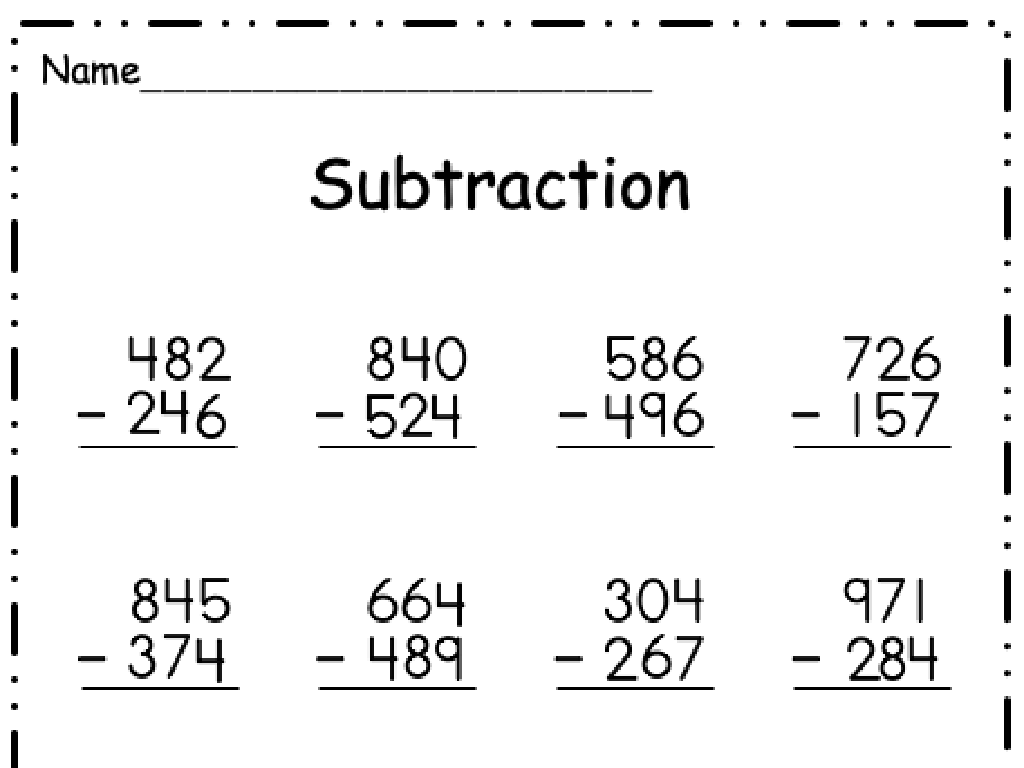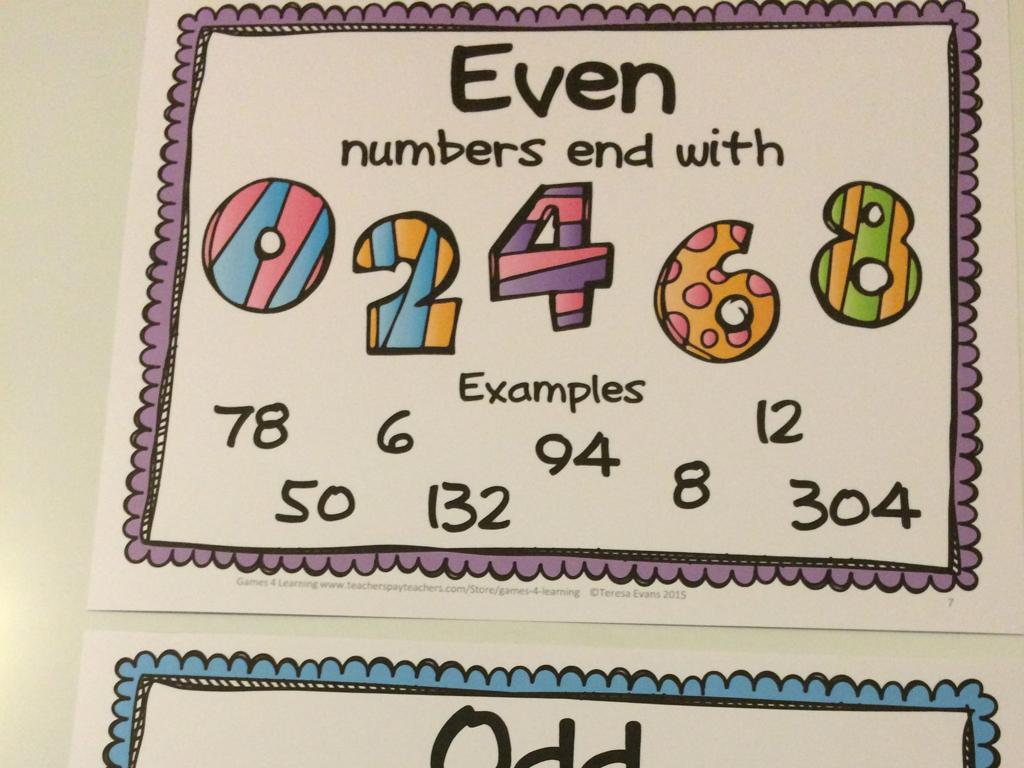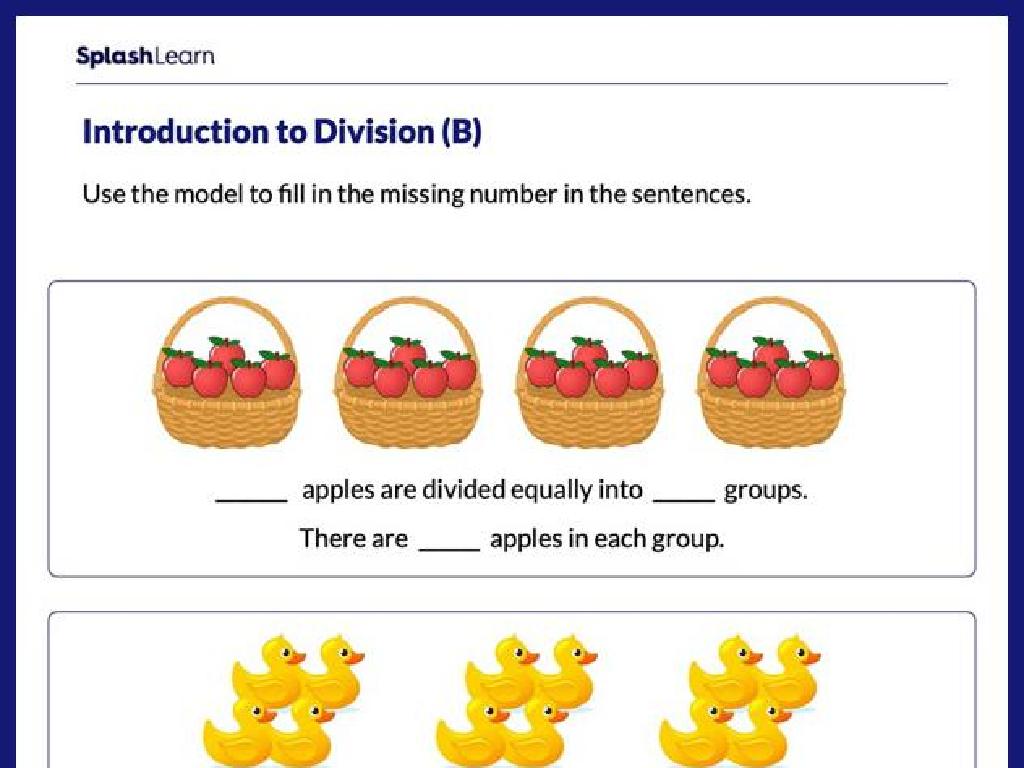Find The Slope From A Graph
Subject: Math
Grade: Seventh grade
Topic: Slope
Please LOG IN to download the presentation. Access is available to registered users only.
View More Content
Welcome to Slopes!
– Understanding slopes in real life
– Slopes are everywhere: roads, ramps, roofs
– Defining the concept of slope
– Slope measures steepness: rise over run
– The role of slope in math
– Essential in graphing, physics, engineering
– Applying slope knowledge
– Use slope to predict and solve problems
|
This slide introduces the concept of slope and its relevance in both everyday situations and various fields of mathematics. Begin by discussing how slopes are present in many real-world scenarios, such as the incline of a hill or the pitch of a roof. Explain that slope is a measure of how steep a line is, often described as ‘rise over run.’ Emphasize the importance of understanding slope in subjects like algebra, physics, and engineering, where it’s used to describe rates of change and graph linear equations. Encourage students to think of examples where they encounter slopes in their daily lives and how they might apply their knowledge of slope to solve practical problems.
Understanding Graphs: The Basics
– Review the coordinate plane
– A flat surface with two number lines: horizontal (x) and vertical (y).
– Learn about X-axis and Y-axis
– X-axis is horizontal, Y-axis is vertical; they intersect at the origin (0,0).
– Practice plotting points
– Use ordered pairs (x, y) to locate points on the plane.
– Explore the slope concept
|
Begin with a review of the coordinate plane, ensuring students recall how to identify the x-axis and y-axis. Emphasize the importance of the origin and the intersection of the axes. Move on to plotting points using ordered pairs, which is crucial for understanding how to find the slope later on. Engage students with hands-on practice by plotting points on graph paper. Introduce the concept of slope as a measure of steepness or incline of a line, which will be explored in more detail in subsequent slides. This foundational knowledge is essential for students to grasp before they can successfully find the slope from a graph.
Introduction to Slope
– Define slope in mathematics
– Slope measures steepness of a line: vertical change divided by horizontal change.
– Understand ‘Rise over Run’
– ‘Rise’ is the vertical change, ‘Run’ is the horizontal change between two points on a line.
– Identify slope on a line graph
– Look at a straight line on a graph and notice how it slants upwards or downwards.
– Practice finding slope
– Use graphed lines to calculate slope using two points.
|
The concept of slope is fundamental in understanding the behavior of lines on a graph. Slope is a measure of the steepness or incline of a line, often described as ‘rise over run’. To identify the slope, students should learn to calculate the vertical change (rise) and the horizontal change (run) between two points on a straight line. Emphasize that the slope is the same between any two points on a straight line. Provide examples of positive, negative, zero, and undefined slopes. Encourage students to practice by picking two points on a line, finding the rise and run, and then dividing them to find the slope. This will prepare them for more complex applications of slope in algebra.
Calculating Slope from a Graph
– Select two points on the line
– Pick any two points, like (2,3) and (4,7)
– Count the rise and the run
– Rise is the change in y, run is the change in x
– Use the slope formula
– Slope (m) = (y2 – y1) / (x2 – x1)
– Slope indicates direction
– Positive slope goes up, negative goes down
|
When teaching students to calculate the slope from a graph, start by selecting any two distinct points on the line. Demonstrate how to count the vertical change (rise) and the horizontal change (run) between these points. Introduce the slope formula, (y2 – y1) / (x2 – x1), and show how to plug in the coordinates of the two points to calculate the slope. Emphasize that the slope represents the steepness and direction of the line; a positive slope means the line goes up from left to right, while a negative slope means it goes down. Provide several examples with different types of slopes and encourage students to practice with graphs of their own.
Understanding Slope: Positive, Negative, Zero, and Undefined
– Characteristics of positive slope
– Rises from left to right, like climbing a hill
– Characteristics of negative slope
– Falls from left to right, like descending a hill
– Zero slope explained
– Horizontal line, no rise or fall
– Undefined slope explained
– Vertical line, slope cannot be calculated
|
This slide aims to help students visually differentiate between positive, negative, zero, and undefined slopes on a graph. A positive slope indicates an increase in the y-value as the x-value increases, resembling an uphill climb. A negative slope, on the other hand, shows a decrease in the y-value with an increase in the x-value, similar to going downhill. Zero slope is represented by a flat horizontal line, indicating no change in the y-value regardless of the x-value. Lastly, an undefined slope is depicted by a vertical line, where the change in the y-value cannot be determined by the x-value since it does not change. Encourage students to sketch graphs for each type of slope and to come up with real-life scenarios that could represent each slope type.
Exploring Slopes on Graphs
– Positive slope line example
– Slope = rise/run; if both are positive, the line goes up to the right
– Negative slope line example
– Slope = rise/run; if rise is positive and run is negative, the line goes down to the right
– Real-life slope applications
– Slopes are everywhere: roofs, ramps, even market trends!
– Understanding slope calculation
|
This slide aims to provide students with a clear understanding of how to find the slope from a graph. Start with a positive slope line, explaining that when both the rise and the run are positive, the line ascends to the right. Then, introduce a negative slope line, where the rise is positive and the run is negative, resulting in a line that descends to the right. Highlight real-life examples of slope such as the steepness of a roof or a wheelchair ramp to make the concept more relatable. Encourage students to think of other examples where slope is evident in their daily lives. Lastly, ensure students grasp the method of calculating slope as the ratio of the vertical change (rise) to the horizontal change (run) between two points on a line.
Practice Time: Finding the Slope
– Let’s find the slope together
– Work in groups to identify slopes
– Each group will analyze different line graphs
– Share your group’s findings
– Present your slope calculations to the class
– Discuss different slopes found
– Compare slopes of various lines and discuss
|
This slide is for a class activity focused on finding the slope from a graph. Begin by demonstrating how to find the slope on the board. Then, divide the class into small groups and assign each group a different line graph. Each group will calculate the slope of their assigned line. Afterward, groups will take turns presenting their findings to the class. This will include the slope they calculated and how they did it. Encourage discussion about the different slopes found and what they indicate about the lines. Possible activities: 1) Slope scavenger hunt with different graphs around the room. 2) Slope matching game with graphs and slope values. 3) Create your own graph and challenge another group to find its slope. 4) Slope puzzle: each group gets a piece of a larger graph and must find the slope to fit it into the puzzle.
Class Activity: Slope Hunt
– Find worksheet line slopes
– Work in pairs for collaboration
– Present and explain your answers
– Share how you found the slope and why your method works
– Understand slope calculation
– Slope shows how steep a line is
|
This activity is designed to reinforce the concept of slope by having students work together to find the slope of various lines on a provided worksheet. By working in pairs, students can discuss their strategies and help each other understand the concept better. After completing the worksheet, each pair will present their answers to the class and explain the process they used to find the slope. This will help students articulate their understanding and learn from others. As a teacher, prepare to guide the students through different types of lines (positive, negative, zero, and undefined slopes) and ensure they understand how to calculate slope using the rise over run method. Possible activities could include finding slopes of lines in a graph, creating their own lines with a given slope, or matching slopes to real-life scenarios.
Wrapping Up: Slope & Practice Homework
– Recap of slope concepts
– Practice reinforces learning
– Regular practice helps solidify the concept of slope
– Homework: Slope calculation worksheet
– Worksheet includes various graphs to find the slope
– Be prepared to discuss solutions
|
As we conclude today’s lesson on finding the slope from a graph, it’s crucial to emphasize the importance of practice in mastering this concept. The homework assignment consists of a worksheet with a series of graphs where students are expected to calculate the slope. This will not only reinforce their understanding but also prepare them for more complex applications of slope in future lessons. Encourage students to attempt all problems and remind them that they will be discussing their solutions in the next class, fostering a collaborative learning environment.






